2024 Ultimate Guide to Pearl Valuation: How Much Are Real Pearls Worth


Whether you're new to pearl collecting or an enthusiast, determining pearl value is complex. It goes beyond a simple supply-and-demand equation. The price of pearls is influenced by several factors – some apparent and others not so much.
For example, a string of pearls can vary greatly in price, ranging from $10 to $1,000,000. Several factors influence the cost, including the type and rarity of pearls used, their quality (such as luster or surface perfection), size, color, and shape.
In this article, we delve into why pearls differ in price range, from inexpensive freshwater ones to high-end South Sea varieties. We also examine what size, shape, color, luster, and surface quality mean when determining their worth.
At the end of this guide, you should be able to know what you're looking at when shopping for pearls and why one strand may cost more than another.
Types of Pearls

When it comes to pearls, variety is key – each type brings something special in terms of beauty, story, and worth. Let's take a look at the main types:
Freshwater Pearls

If you want pearls that offer lots of options at affordable prices, then freshwater pearls could be perfect for you. China produces most of these cultured pearls, which come in an array of shapes, sizes, and colors.
You may find every hue - from classic white to intense pink, peachy orange, and soft lavender. Their competitive price also means you can get more for your money. Think about using them not only in upmarket designs but also for fashionable styles intended for everyday wear.
Akoya Pearls

When many people think of pearls, it's Akoya pearls they have in mind: round and lustrous with a brilliant shine. Japan is the main source of these flawless beauties. They are usually white or cream-colored. Sometimes, they have faint rose or silver overtones.
If you love traditional pearl jewelry such as strands (necklaces) or studs (earrings), then this is likely what you're after. Expect their appearance – and price – to reflect their quality.
White South Sea Pearls
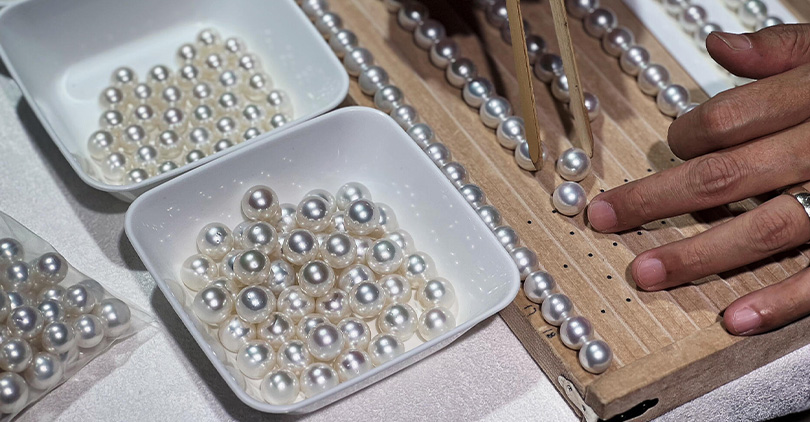
Cultured in Australia's warm seas, White South Sea pearls are the royalty of the pearl world. They are famous for their large size – between 9mm and 20mm – as well as their luxurious satiny luster.
Because they are so rare and their quality is so high, these pearls are among the most expensive ones out there. Perfect if you want your jewelry to get noticed!
Golden South Sea Pearls

The warm waters of Indonesia and the Philippines produce Golden South Sea pearls. These have the same exceptional qualities as whites – they're big (9mm-20mm) and beautiful.
But it's their warm colors that make them special, ranging from light champagne to intense shades like burnished copper or dark gold. These factors combine to make Golden South Sea cultured pearls stunning and very valuable. They have a winning combination!
Tahitian Pearls

Tahitian pearls, sometimes referred to as "black pearls," come from French Polynesia's warm seas. These are not truly black.
Instead, their palette ranges from peacock green and eggplant purple to deep blue. Besides, their overtones may include pistachio, cherry, or steel gray.
In addition to their rich colors, Tahitian pearls can also be quite large: from 8 mm all the way up to rare 18-mm specimens. If you're looking for something both stunning and different, these darkly beautiful pearls fit the bill perfectly!
Average Prices of Different Types of Pearls

The world of pearl pricing is fascinating: each type of pearl falls into its own price range. Here, we explore average prices:
Freshwater Pearls

If you're on a budget, freshwater pearls are your best bet. You can get a good quality necklace starting at around $50 and going up to $2,000 for something really nice.
The price depends a lot on factors like size, shape, and luster. But that means you can find stylish everyday jewelry made from them at an excellent price.
Akoya Pearls

Akoya pearls cost more than freshwater ones and look more sophisticated, too. For a decent strand of Akoya pearls, prices start at around $300 but can go up to $5,000.
If you want the very best with perfectly round pearls that have a high shine, expect to pay over $10k. These types of pearls are classically beautiful and often seen in traditional pearl jewelry designs.
White South Sea Pearls

One of the most valuable types of pearls available, a single white South Sea pearl can cost anywhere from $1,000 all the way up to $20,000 or more.
These pearls are considered luxurious because they have a large size. Besides, they are extremely lustrous, with a satin-like feeling when touched. Perfect if you want your jewelry to make a statement!
Golden South Sea Pearls
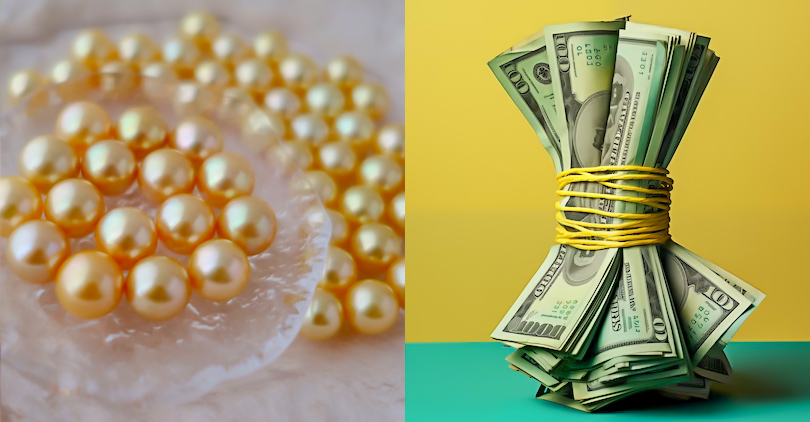
Like their white counterparts, Golden South Sea pearls also fall into the high-value category. Expect prices for these pearls to start around $1,500.
But don't be surprised if top-quality strands fetch upwards of $30,000. Their warm golden tones combined with their impressive size mean that they're in high demand – which always equals big price tags!
Tahitian Pearls

Tahitian pearls are known for their unique dark tones and can fetch a high price. A Tahitian pearl necklace of good quality may cost anywhere from $500 to $25,000.
The price depends on factors such as color, size, and luster. However, very pretty or unusual colors are rare. So, they are more expensive than others.
Which Pearl Is the Most Valuable?

Out of these options, South Sea pearls (in white and golden) tend to be worth the most. Because they are larger, have more brilliant shine, and are rarer.
Pearls don't usually get more valuable as time goes on, like some gemstones do. They can lose luster if they're not well cared for, so maintenance matters a lot—though if you take good care of them, their beauty should endure.
However, there are cases where well-preserved vintage pearl jewelry in great shape goes up in value. This happens because it is both rare and well-made.
Factors Affecting Pearl Value

Knowing what factors affect pearl value can make shopping for pearls fascinating. It can also make it rewarding. So, let's dive into the key things that determine how much a pearl is worth.
Luster

The shine of a pearl is the most important aspect when determining its worth. Luster specifically refers to how light reflects off a pearl's surface.
High-luster pearls have bright, crisp reflections that seem to go deep into the gem. They possess an almost mirrored effect - something jewelry lovers covet.
Low-luster pearls, conversely, appear flat; their shine doesn't radiate far. These pieces will not fetch as high a price as those with greater intensity and depth in their luster.
Surface Quality

Blemishes affect value. Therefore, surface quality matters when grading pearls. Those with fewer imperfections are worth more money. Buyers look for consistency and smoothness in nacre when examining this factor.
You'll hear jewelers discussing AAAAA, AAAA, AAA, AA, or A. These denote grades given specifically toward surface quality. Here, AAAAA signifies the very best (or least blemished) out there.
Shape

When it comes to shape, round pearls are considered the most valuable because they're rare and have a classic look. However, if you want something cheaper or unique, baroque pearls don't have to be perfectly symmetrical. They also don't have to be uniform in shape.
Color

While white and cream-colored gems are always going to be classic. Yet, there's a whole rainbow of colors out there: black, gold, blue – you name it!
This is good news because different colors suit different people's skin tones (check this out when trying them on). As a general rule, with pearls, the rarer the color - the higher their price tag can climb.
So, peacock green Tahitian pearls or fabulous golden hue South Sea ones would be considered more valuable.
Size

The size of a pearl is an important factor in determining its value. Larger pearls are rarer and, therefore, more expensive.
For example, while freshwater pearls may range in size from 5mm to 16mm, South Sea pearls can grow as large as 20mm. The bigger the pearl, the higher the price.
Nacre Quality

Pearls are made up of nacre, the iridescent substance that gives them their beauty. But not all nacre is created equal.
The best-quality pearls have thick nacre coatings that reflect light stunningly. Pearls with thicker nacre have more luster. And they are therefore worth more money because they look better over time.
Matching

When it comes to strands or sets of pearls, matching is everything. Color, size, shape, and luster all need to harmonize for there to be any visual appeal at all.
The better matched the pearls are overall – especially in higher-end jewelry – the more valuable they will be.
How to Tell if Pearls Are Real

Differentiating between genuine and counterfeit pearls can be difficult. However, there are several important distinctions and easy tests that can help you confirm whether a pearl is real or not.
Differences Between Real and Fake Pearls

Real pearls come with natural variances such as slight differences in size, shape, or surface flaws. They have a rich luster that reflects light in layers. It may appear different depending on the lighting source.
Fake pearls, conversely, will largely be the same size and shape with no blemishes. If made of glass or plastic, they will possess an all-over shine rather than nuanced luminosity.
Simple Tests to Determine Authenticity

· The Tooth Test: Rub the pearl against your teeth. Real pearls feel gritty because of their layers of nacre, while fake pearls feel smooth.

· The Magnification Test: Examine the pearl under a magnifying glass. Real pearls have slight imperfections and natural ridges on their surface. Fake pearls do not, but they are perfectly smooth.
· The Weight Test: Hold the strand in your hand. Real pearls feel heavier because they are denser than plastic imitations (if you have several strands, compare weights).
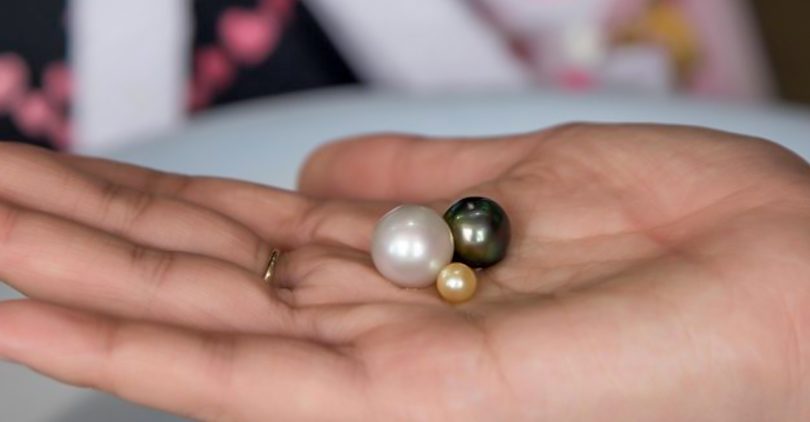
Importance of Buying from Reputable Sources

To make sure that the pearls you are buying are real, purchase them from well-known jewelers or authorized dealers. These sellers will be able to give you a certificate of authenticity and information about the origin and quality of the pearls.
Buy from trusted sources. They will ensure your pearls are real and pretty. They might even become more valuable!
Where to Buy Real Pearls

When it comes to purchasing authentic, high-quality pearls, knowing where to look and how to verify their legitimacy is key. Here are a few suggestions on where you can buy genuine pearls:
Jewelry Stores
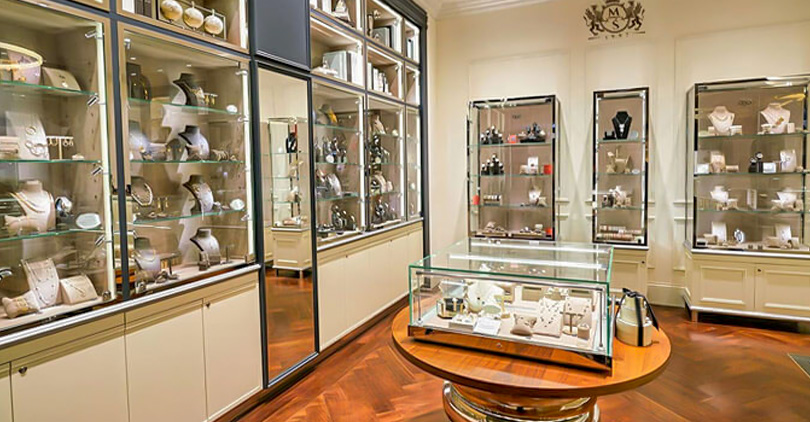
If you want to be confident about your purchase of real pearls, go to a reputable jewelry store. These stores often staff experts who can assist you in choosing what to buy.
Besides, they provide certificates proving authenticity. Look for jewelers with long histories—ones with satisfied customers and good reviews.
Online Retailers

Shopping online is convenient, plus you can find just about any kind of pearl there. Trusted retailers provide high-res photos, details galore, and authenticity certificates.
Consider buying from White Victoria, Blue Nile, James Allen, and Mikimoto. Make sure any website you consider has a strong return policy (just in case). And read customer reviews when possible to confirm that they're reputable.
Directly from Pearl Farms or Markets

A fun option is buying straight from the source at pearl farms or markets. It is especially beneficial if you are traveling in Japan, Tahiti, or Australia—the main pearl-producing regions.
Often, this means better prices as well as higher quality. In some cases, these locations may even offer tours so you can see pearls being "grown" yourself!
Tips for Ensuring Authenticity and Quality
· Certificates of Authenticity: It is always advisable to ask for a certificate of authenticity from a recognized gemological institute when buying pearls.
· Reputable Sellers: Try to buy from well-known sellers who have strong reputations and positive reviews.
· Return Policies: Make sure that you are able to return the pearls if they do not meet your expectations.
By following these tips and buying from good sellers, you can feel confident in your purchase. Such pearls are beautiful and real, and will last forever.
Care and Maintenance of Pearls
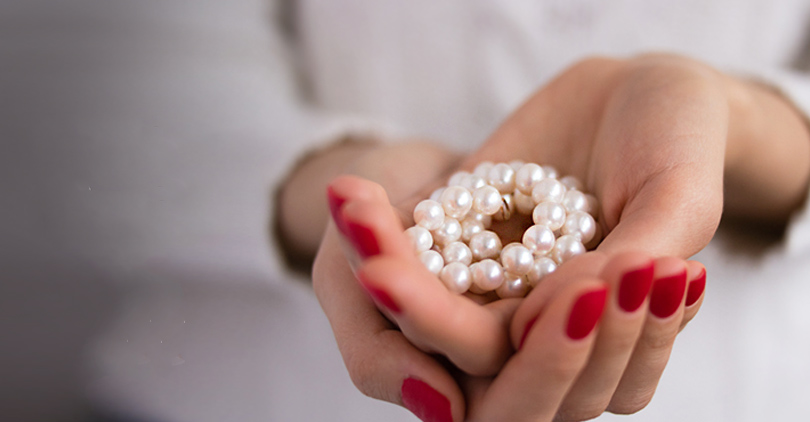
With proper care, your pearls can maintain their beauty and luster for years to come. Follow these tips to keep your pearls looking great:
Proper Cleaning Methods

To clean pearls, use a dry soft cloth. Wipe each pearl gently to remove dirt or oils. For a deeper clean, use a soft cloth dampened with water. Then gently wipe pearls with cloth dipped in solution.
Remember: harsh chemicals or abrasive cleaners can damage pearls' surface. Avoid these to make your pearls look stunning.
Storage Tips to Maintain Luster and Quality

Store pearls in a soft cloth pouch or separate compartment in a jewelry box so they don't rub against other gems—this can cause scratches.
Pearls need moisture to stay shiny, so don't stow them in an arid environment like a sealed plastic baggie. Instead, opt for breathable fabric pouches or boxes lined with silky material.
Common Mistakes to Avoid
To keep your pearls looking their best, avoid exposing them to any chemicals. These include those in perfumes, cleaning products, or hairsprays. These chemicals can damage the nacre. Always put your pearls on after applying makeup or hair products.
Don't use ultrasonic cleaners or steamers, especially on antique pearls. The intense heat and vibrations can cause cracks. Finally, don't leave pearl jewelry submerged in water for long periods, as this can weaken the string.
Conclusion

To understand how pearls are valued, you need to appreciate their luster (shine), surface quality, shape, color, and size. Real pearls are always worth having because they never go out of fashion, and they retain their value.
Make sure you buy from a reputable source. Check for authenticity carefully. And look after them well so their beauty lasts as long as you do!
Whether they're Akoya classics, exotic Tahitians, or South Sea stunners, there's nothing quite like pearls. They give the finishing touch to an outfit. Enjoy your search. And we hope they bring you lifelong pleasure and style!


Leave a Comment